– Runyon’s Esenbeckia (Esenbeckia runyonii)
by Frank Wiseman
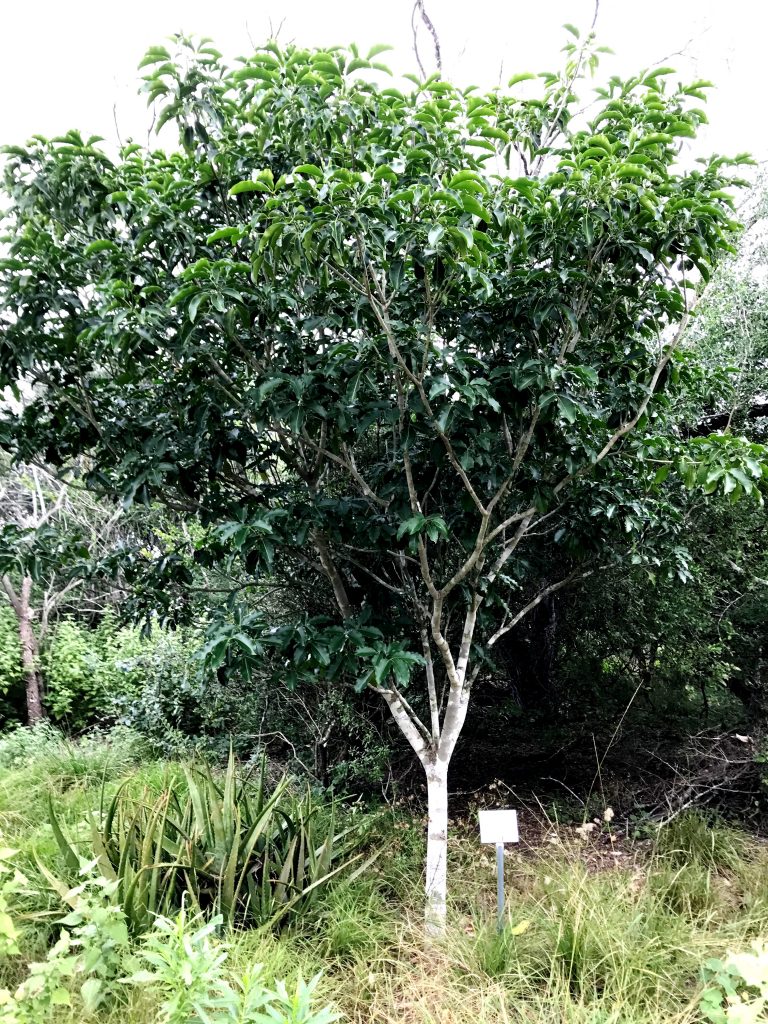
I became aware of Runyon’s Esenbeckia (Esenbeckia runyonii) when our Texas Master Naturalist group of volunteers at Harlingen’s Hugh Ramsey Park decided to name our first specialty garden in honor of this famous local botanist. Gene Lester of the Native Plant Project donated two Runyon Esenbeckias to our chapter for transplant in our selected garden spot on Ebony Loop. The two trees had been growing successfully at his home in Palm Valley-Harlingen’s Country Club.
In January of 2005, with guidance from Gene and Mike Heep, our local native nurseryman, a spot was selected for one of these trees in our Runyon Garden. The other tree was to be placed in the Boy Scout’s newly formed Sensory Garden on the opposite side of Ebony Loop. Many Valley-ites are not aware of this special tree nor probably aware of Runyon’s work with our native plants.
Tony Reisinger called me one day recently and asked if I had read Journey’s Reward, a book just published by Doug Perkins, grandson of Robert Runyon. Tony was very excited about the book and offered me his copy to read. He couldn’t believe our chapter had been mentioned in it. I got the book from Amazon on my Kindle to read. I enjoyed it and decided to share parts of Chapter 21 about the history of Runyon and his Tree. I urge you to read his book as it covers more than just Robert Runyon’s venture into becoming a self-taught botanist, his photography, his business in a Curio Store in Matamoros, Mexico, and his life as a politician in Brownsville where he was mayor for several years. It covers early Valley history, early aviation, and the Mexican Revolution, where Runyon used his photographic skills to become a war reporter/photographer.
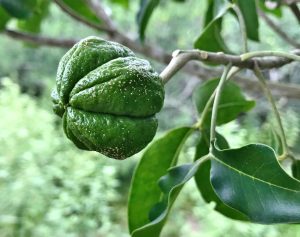
My story begins in Chapter 21….
Runyon was not a person to tout his own petard as far as his botanical work was concerned, but he was active in his campaign to bring attention to Texans and the world of his shared discovery of the rare Texas tree called limoncillo.
On April 5, 1929, one of Runyon’s colleagues, Harvey Stiles…an agricultural expert in citrus varieties…discovered a group of trees with mature fruit, growing on the banks of the Resaca de los Cuates just east of a road that led from Los Fresnos to Olmito.
Mr. Stiles was known for his expertise in citrus cultivation; so, when he saw these trees, he was naturally interested in comparing them to other citrus trees, like orange, lemon, and grapefruit. Probably what drew his eye to this tree were the leaves, similar to the other citrus trees already growing in the Valley. He told Runyon of his discovery, and on July 4, 1929, Runyon dug up a three-foot seedling that he transplanted to his own home garden in Brownsville. (The tree still thrives there after more than 90 years.) Herbarium samples were sent to The University of Texas. Runyon, with his now acquired knowledge of taxonomy, continued his study of the tree.
Since this was back in 1929, Runyon was not to know that he had precious few years to continue his study of the original trees before a land clearing for agricultural production was to occur in 1933 destroying this group of trees.
Runyon’s observations of these trees in situ let him make notes about the trees: height…up to thirty feet, shape…close rounded top, and spreading branches with evergreen leaves. He noted that the trees did put on new leaves each year.
Through further study, he found out that Mexico also had a similar tree in several Mexican states. There, too, it was called limoncillo. This tree is known as the Esenbeckia berlandieri.
For the rest of his life, unless he was traveling, Runyon observed this tree every day. Despite his care, Runyon’s Esenbeckia grew to only about thirteen feet between 1929 to 1940. Finally, Runyon noted that his tree bloomed for the first time on May 5, 1940. He described the flowers as “small, white, paniculate and showy.” His tree bloomed again in November of the same year and a third time in June 1943.
Runyon discovered that the pod-like fruit took about four months to mature and provide seeds. These seeds he found difficult to harvest and difficult to germinate. At maturity, he noted that the pods ejected its seeds some distance from the tree. With these difficulties he believed they had limited viability for propagation.
Runyon enlisted the help of colleagues to search for the tree wherever they went in wild places in the Valley. On March 20, 1940, Runyon accompanied W.K. (Kenneth) Clore to Barreda Station, now known as Russeltown at the intersection of Expressway 83 and highway 100. Clore identified a group of trees in a thicket near Resaca del Rancho Viejo. Runyon confirmed these trees as Esenbeckias, and on December 9, he observed another find eight miles east of Brownsville.
After finding these trees, Runyon realized that the trees preference for growing location was in thickets of ebony trees. Some other preferred thickets of the area were nearby elm (olmos), ash (fresnos), and hackberry (palo blanco).
Runyon shared his findings with botanist Morton at the Smithsonian. Runyon noted that three smooth and shiny leaves sprouted from each branch, a characteristic he believed made this Esenbeckia unique from a similar tree in Mexico.
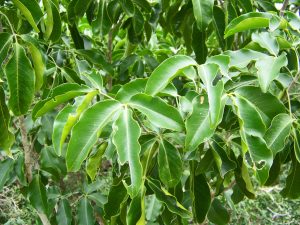
”Another specie(s) grows south of here, Esenbeckia berlandieri, and has a cluster of five leaves, instead of three leaves, like my tree,” he wrote.
“By 1930, Morton determined that the three leaves per stem set Runyon’s Tree apart from E. berlandieri and another closely related tree, Esenbeckia pentaphylla. Today, some botanists believe E. berlandieri and E. runyonii are the same species and use the runyonii name as a synonym. Other botanists consider Runyon’s Esenbeckia a distinct species.”
Landowners in Mexico refer to these trees as different varieties. They call the Berlandier’s tree the jopoy, a name that comes from the Yucateco dialect. (A Mayan language)
Eco-conscious individuals like the tree as a host for some insect pollinators and host for the giant swallowtail butterfly.
Runyon believed that the Valley’s rich, alluvial clay soil near a resaca was ideal for germinating Esenbeckia seeds. Unfortunately, beginning in 1904, land clearing began on a wide scale with the coming of the railroad and northern invaders searching for cheap land to farm. These facts led Runyon to theorize that in the last century a much larger population of Runyon’s Esenbeckia grew in Texas.
Some believe that the species’ northernmost range is in Cameron County.”The U.S. Government also contended that range limit in 1994 after experts at the Native Plant Project, a nonprofit group devoted to preserving and propagating native lower Rio Grande Valley plant, life, identified Runyon’s Esenbeckia as Texas’ rarest tree. Under the then-secretary Joe Ideker, the organization asked the federal government to list Runyon’s Esenbeckia; as an endangered species. Such a listing would promote management and conservation of any Runyon’s Esenbeckia found on private land. The U.S. Fish & Wildlife Service rejected the petition in June 1999. One reason was that Mexico’s inventory of Runyon’s Esenbeckia indicated large populations in the states of Tamaulipas, Nuevo Leon, San Luis Potosi, Queretaro, and Hidalgo.”
In the 1950s, Robert A. Vines (a Houston botanist) made repeated visits to Runyon’s Brownsville home to view his gardens. He included Esenbeckia runyonii in his 1960 comprehensive study, Trees, Shrubs and Woody Vines of the Southwest.
“Other discoveries of the tree were made by his grandson Don Perkins of San Antonio in September of 1984, growing in the wild in soil near Rancho Viejo. Mike Heep, native plant grower from Harlingen, discovered a third Runyon’s Esenbeckia the next day. The U.S. Fish & Wildlife Service later purchased the property, and in 2018, fifteen Esenbeckia runyonii grow in the Ranchito tract of the Lower Rio Grande Valley National Wildlife Refuge in Cameron County.”
We now know that Runyon’s view for the preservation of the species in the Lower Rio Grande Valley falls on the current-day residents.
Mike Heep, our local native plant grower, is among those residents who contribute to a permanent solution every day. Since 1985, he has germinated seeds collected from the Resaca del Rancho Viejo group of trees. “I was able to sprout about 350 (seedlings), of which most are here at our nursery,” Heep said. “The Gladys Porter Zoo has purchased some from us, and they have two nice specimens.”
As of this date, our volunteers have added three more Esenbeckia in Ramsey Park. One specimen was recently stolen form our Citrus Garden, created in 2018-2020. The other two seedlings are in a location away from easy view.
Of particular interest to Texas Master Naturalist is the mention in this book the following:
Chapter 26. “In addition, thirty miles north of Brownsville, a good sampling of native flora is at The Robert Runyon Garden, located along one of the trails with Harlingen’s Hugh Ramsey Nature Park. At this unique and free garden, volunteers with the Rio Grande Chapter of Texas Master Naturalist honor Runyon by nurturing many of his plant discoveries, including Runyon’s Esenbeckia and Runyon’s Violet Wild Petunia.”
Those of us who have volunteered our efforts in this endeavor of establishing a native garden spot in honor of Robert Runyon feel humbled to be mentioned in this book. It is my desire that after reading this, you will venture out to Ramsey Park to view ‘Our Esenbeckia.’ Journey’s Reward by Doug Perkins is available on Amazon, hard paper back and Kindle version.
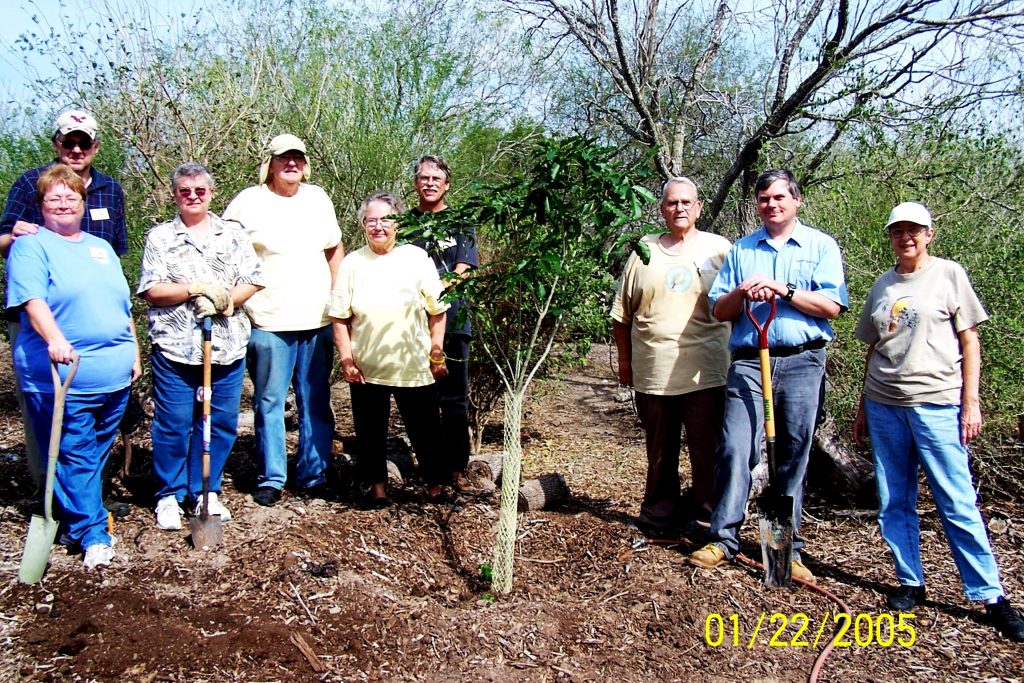

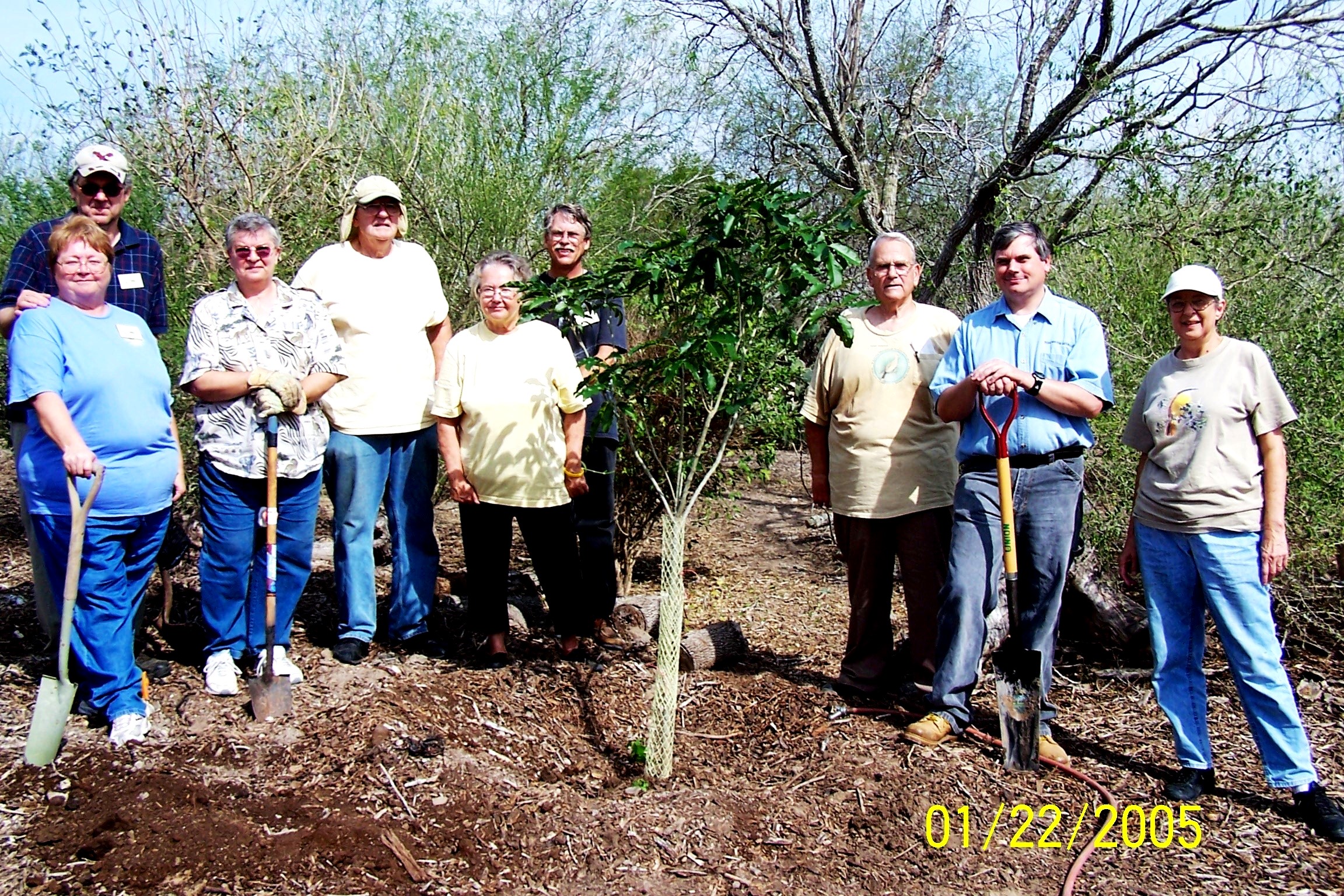
Leave a Reply